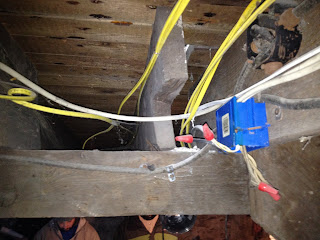Misunderstood Electrical “Defects”

I hear home inspectors and even “licensed” electricians disagree on what an electrical defect is. A defect or “code violation” is often misunderstood and confused. I hear inspectors say things that are unsubstantiated and look over items that are clearly an issue. As home inspectors, we are not conducting an electrical code inspection, however many of the items home inspectors are inspecting and reporting on are in fact, code related. One of the things that stand out is sloppy work. Although there is nothing specific, some of the guidelines for electric work are: Wires should run in straight lines that are level and plumb, NM wire should not be twisted so it lays flat, electrical equipment should be installed level and plumb and performed in a workmanship like manner. Here is some clarification on common defects that may be overlooked:
- Wire should be secured within 12 inches of a service panel and 4 1/2’ throughout the run
- Outdoor circuits should not be connected to a kitchen appliance circuit
- Lateral service riser should be secured within 3 feet of the meter
- Non-Metallic wire going through a metal conduit must use a proper bushing / wire / cable clamp connector
- GFCI’s are required for all receptacles in a garage except; receptacles that are not readily accessible (requiring a ladder), and receptacles that supply a dedicated single appliance.
- Electrical equipment that is not Underwriters Laboratory (UL) listed should not be used
- UL listed ground clamps are made of brass, not aluminum
- Unapproved circuit breakers. If the breakers are not the same manufacture as the panel or a direct manufacture replacement, that is a defect, even if they fit
- All junction boxes should have covers
- Outlets should not have paint on them
Related Articles:
- Modern Low Voltage Lighting
- Reporting on 2 Slot Ungrounded Receptacles
- Surge Protection For Your House (VIDEO)
- Required Dedicated Branch Circuits
Want To Learn More? Click HERE to Search Our Full Database Of Home Inspector Newsletters.



